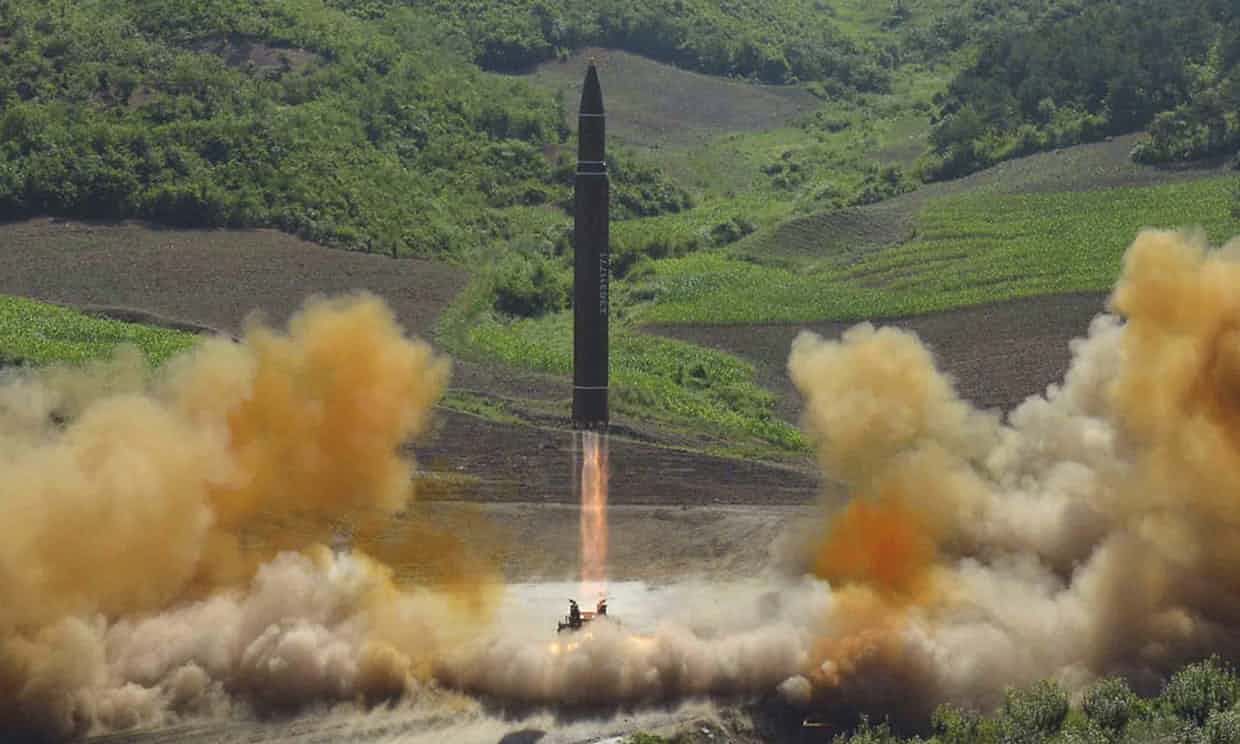DPRK denuclearization :US detects new activity
July 31, 2018 | Expert Insights

U.S. spy satellites have detected renewed activity at the North Korean factory that produced the country’s first intercontinental ballistic missiles capable of reaching the United States, a senior U.S. official said on Monday, in the midst of talks to compel Pyongyang to give up its nuclear arms.
Background
The North Korean nuclear program has been a source of concern for the US and the international community for decades.Since January 2018, Pyongyang appeared to have softened its stance, initiating diplomatic meetings. On April 27th, North and South Korean leaders Kim Jong-Un and Moon Jae-In held a historic summit, the first in over a decade. The two nations announced that they had agreed to end the 60-year Korean War and signed the Panmunjom Declaration which agreed to denuclearise North Korea. A meeting was also arranged between the North Korean leader and the US President, the first of its kind.
However, North Korea reverted to a more aggressive stance by cancelling a meeting with South Korean officials.National Security Advisor John Bolton said that the United States was looking at a 2004 “Libya model” to denuclearise North Korea. Pyongyang responded that they would “no longer be interested” in dialogue if the US was trying to push for “unilateral nuclear abandonment.” It threatened a "nuclear-to-nuclear showdown". US President Trump cancelled the summit on May 24th, due to Pyongyang’s “tremendous anger and open hostility”.
However, the historic Singapore Summit was back on for June 12th. The summit saw the two leaders agreeing to begin a diplomatic process to “work toward complete denuclearization of the Korean Peninsula.” The denuclearization pledge taken had no time frame. President Trump continued to dismiss any skepticism regarding North Korea’s intentions to denuclearize. Recently, a US based think-tank , North 38, has released satellite images of North Korea’s Sohae Satellite Launching Station. The images indicate that North Korea has taken its first step to fulfil the pledge of denuclearization made to President Trump at the Singapore Summit.
Analysis
U.S. spy agencies are seeing signs that North Korea is constructing new missiles at a factory that produced the country’s first intercontinental ballistic missiles capable of reaching the US. Newly obtained evidence, including satellite photos taken in recent weeks, indicates that work is underway on at least one and possibly two liquid-fueled ICBMs at a large research facility in Sanumdong, on the outskirts of Pyongyang.
The findings are the latest to show ongoing activity inside North Korea’s nuclear and missile facilities at a time when the country’s leaders are engaged in arms talks with the United States. The new intelligence does not suggest an expansion of North Korea’s capabilities but shows that work on advanced weapons is continuing weeks after President Trump declared in a Twitter posting that Pyongyang was “no longer a Nuclear Threat.”
The reports about new missile construction come after recent revelations about a suspected uranium-enrichment facility, called Kangson, that North Korea is operating in secret. Secretary of State Mike Pompeo acknowledged during Senate testimony last week that North Korean factories “continue to produce fissile material” used in making nuclear weapons. He declined to say whether Pyongyang is building new missiles.
The Sanumdong factory has produced two of North Korea’s ICBMs, including the powerful Hwasong-15, the first with a proven range that could allow it to strike the U.S. East Coast. The newly obtained evidence points to ongoing work on at least one Hwasong-15 at the Sanumdong plant.Many analysts see the dismantling at Sohae Satellite agency as largely symbolic, and believe that the test stand could easily be rebuilt within months.
Independent missile experts this week also reported observing activity consistent with missile construction at the Sanumdong plant. The daily movement of supply trucks and other vehicles, as captured by commercial satellite photos, shows that the missile facility “is not dead, by any stretch of the imagination,” said Jeffrey Lewis, director of the East Asia Nonproliferation Program at the James Martin Center for Nonproliferation Studies.
The Kangson facility was first publicly identified in May in a Washington Post article that cited research by nuclear weapons expert David Albright. Some European intelligence officials are not convinced that the Kangson site is used for uranium enrichment. But there is a broad consensus among U.S. intelligence agencies that Kangson is one of at least two secret enrichment plants.
Counterpoint
The exception is the Sohae Satellite Launching Station on North Korea’s west coast, where workers can be observed dismantling an engine test stand, honoring a promise made to Trump at the summit.
Assessment
Our assessment is that, as stated earlier, US needs to have a well thought out sustained strategy for the North Korean denuclearization process. We feel that the loopholes in the denuclearization pact is adding up and it is not surprising that it led to DPRK’s continued activity in the Sanumdong factory. We believe that North Korea’s strategy includes potentially asserting that they have fully denuclearized by declaring and disposing of 20 warheads while retaining dozens more.








Comments